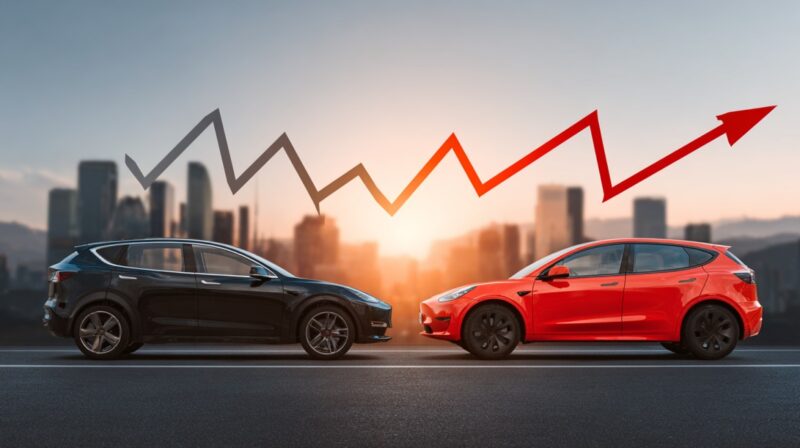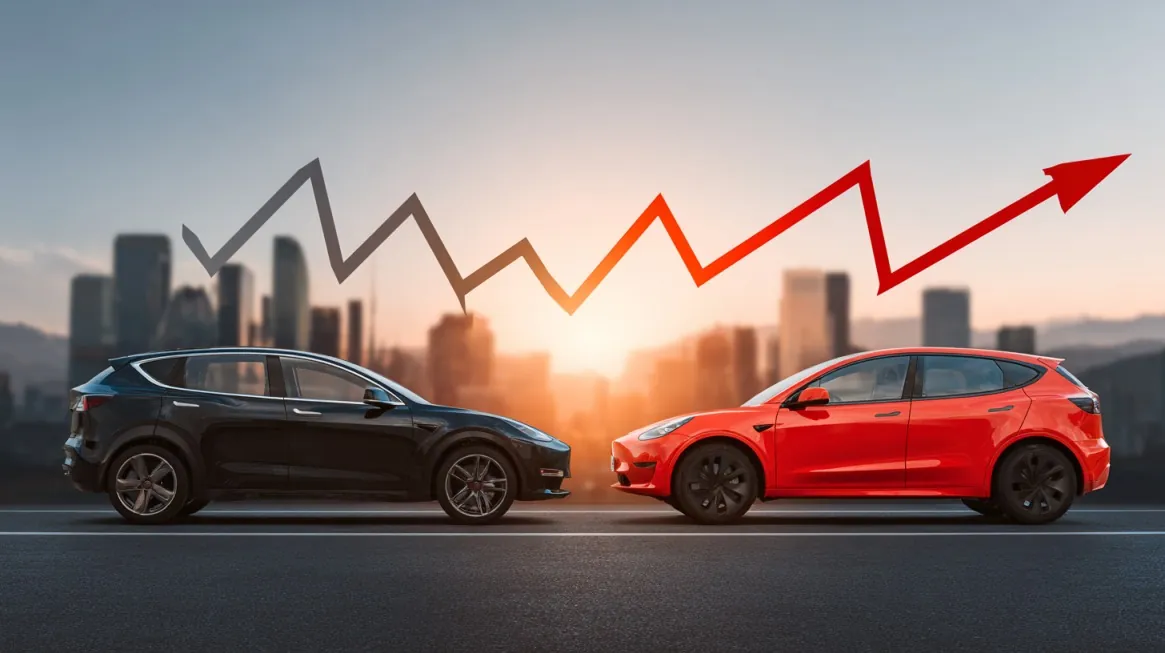
Share Post:
Electric cars are becoming common, and many people simply want to know whether they lose value faster than regular vehicles.
Buyers want a sense of what they’re getting into, and sellers want a realistic idea of pricing.
Market data shows clear patterns that help answer that question.
Keep reading and you’ll see how the numbers actually look.
Table of Contents
ToggleHow EV Depreciation Compares With Regular Vehicles
Electric vehicles have reached the point where you can see clear patterns in how their prices fall over time.
Most models lose value faster than regular vehicles, and the gap becomes obvious once you look at long-term numbers.
Five years after purchase, many EVs shed around half of their original price, while regular vehicles usually hold on to a larger share.
Part of the drop shows up earlier than expected, especially when newer models arrive with longer range or quicker charging.
Price differences between brands can be wide, yet the overall trend still leans toward sharper depreciation on the electric side.
Main Reasons EVs Lose Value Faster
- Rapid Technical Progress: Fresh EV models often leap ahead in range, charging speed, and efficiency. Older versions feel outdated sooner, which pulls down used prices.
- Concerns Around Battery Life: Buyers pay close attention to battery health and worry about replacement costs. Even when batteries age well, fear of decline affects resale value.
- Incentives That Skew the Market: Many countries support new EV purchases with credits or subsidies. Those advantages create a tough environment for used EV pricing.
- Rising Supply in the Used Market: Lease returns, ride share fleets, and company cars are adding a steady stream of used EVs. Supply grows faster than demand, pushing prices lower.
Models That Hold Value Better Than Others

Some electric cars manage to hold their value noticeably better than the rest of the pack.
They don’t match regular vehicles overall, but compared to many EVs that drop fast, these models stand out with stronger demand and slower price declines.
| Model | Average 5-Year Depreciation* | What Helps It Hold Value |
| Tesla Model 3 | Around 50–60% loss | Strong brand pull, wide charging access, and regular software updates that keep older cars relevant. |
| Tesla Model X | Around mid-40% loss | Luxury appeal, unique features, and strong recognition in the used market. |
| Ford Mustang Mach-E | Around 60% loss | A mix of performance and practicality, growing trust in Ford’s EV lineup. |
| Hyundai Kona Electric | Around high-50% loss | Good range for its size, reliable reputation, and affordable entry point for many buyers. |
*Depreciation ranges vary by region, mileage, condition, and battery health.
Why These Models Do Better
- Strong demand: More people search for these models second-hand, which keeps prices from collapsing.
- Decent range and charging performance: Models that can handle daily driving without range anxiety appeal more to used buyers.
- Established brands: Some manufacturers built credibility early in the EV space, and that trust carries over into the resale market.
- Ongoing updates: Cars with frequent software improvements age more gracefully, helping older versions stay attractive.
Things to Keep in Mind
- Even the “best” EVs still lose a large chunk of their value within five years.
- Local infrastructure and adoption rates can shift numbers up or down.
- Battery condition matters more than mileage, and a well-maintained pack makes a big difference.
- Newer generations with better range or faster charging can suddenly pull down the value of older versions.
What Sellers Should Expect In The Current Market

Price differences between models are wide, and older EVs with shorter range tend to attract fewer inquiries.
New models with better range and faster charging appear often, which makes earlier versions feel dated.
Incentives on new EVs also pull used prices down because buyers compare your listing with discounted showroom options.
Supply in the used market keeps growing due to lease returns and company fleet turnover, so competition among sellers is strong.
Tips To Sell Your EV Faster
- Present clean battery data: Buyers care about battery health more than mileage. A clear battery report builds trust and reduces hesitation.
- Highlight real range, not just official numbers: Accurate daily range helps buyers picture how the car fits into their routine.
- Take clear photos in good lighting: Exterior shots from all angles, clean interior images, and a tidy charging cable setup make your listing look more professional. You can also use an AI presentation maker to highlight the main advantages of your car and what makes it worth buying. It’s a simple trick to reach more potential buyers.
- Show proof of regular charging habits: Steady charging routines from reliable stations create confidence in battery condition.
- Price according to current data, not sentiment: Competitive pricing draws the first wave of buyers. Overpricing slows interest quickly in a crowded market.
- Mention software updates: Frequent updates help older EVs age better, so let buyers know your car is up to date.
- Respond fast and be clear: Quick answers, transparent details, and honest communication push buyers toward action.
- Meet in a location with a charger available: Buyers often want a short test drive plus a chance to check charging speed or behavior. A convenient spot adds confidence.
Can We Expect Any EV To Ever Become A “Classic”

Plenty of people joke that EVs are “just appliances,” but every era produces machines that outgrow their purpose and turn into icons.
Classic status usually grows from a mix of design, cultural impact, rarity, innovation, and emotional connection.
EVs are still young as a category, yet a few models stand out as potential long-term icons.
| Vehicle | Why It May Become a Future Classic |
|---|---|
| Tesla Roadster (First Generation) | Early units have historic weight; limited production; strong performance for its time; considered the car that kick-started modern EV culture. Collectors value its origin story and industry impact. |
| BMW i3 | Unique design with carbon-fiber structure, upright stance, and futuristic cabin. Its oddball nature and eventual low numbers make it a likely cult classic. |
| Tesla Model S (Early Years) | Proved an electric luxury sedan could be fast, elegant, and practical. Significant cultural impact; early versions with quirks may become collectible as surviving examples decline. |
| Nissan Leaf (First Generation) | First true mass-market EV; represents the moment EVs became mainstream. Clean originals with good batteries may gain quiet collector appeal. |
| Porsche Taycan | High-performance EV from a legacy enthusiast brand; strong pedigree and build quality. Porsche models often develop long-term collector followings. |
Final Thoughts
Electric vehicles are reshaping the market faster than most of us expected. Prices rise and fall, tech evolves every year, and buyers and sellers are still figuring out how these cars age.
Depreciation hits EVs harder today, but the picture keeps shifting as range improves, charging spreads, and more people choose electric over regular vehicles.
Some models will keep losing value quickly, some will hold their ground better, and a small group will eventually earn classic status.
Related Posts:
- Subaru Dashboard Warning Lights - What Every Driver…
- How to Secure Your Teen’s First Car - Safety Tips…
- 12 Reasons Why Gas Cars Are Better Than Electric in 2025
- 8 Safest Family Cars of 2025 – Crash Tests, Features…
- Are Electric Vehicles Safer? Comparing EVs and…
- How To Create A Car Listing That Attracts Buyers And…








